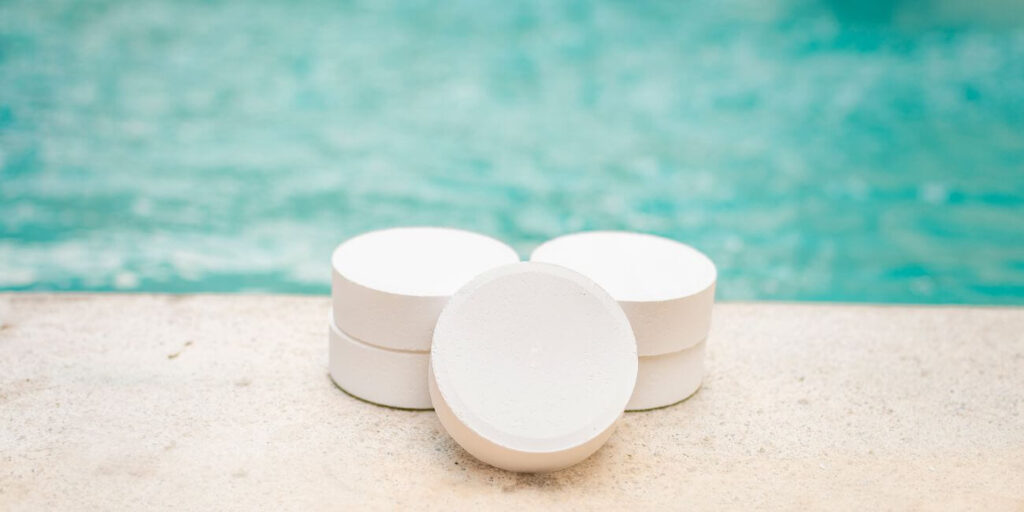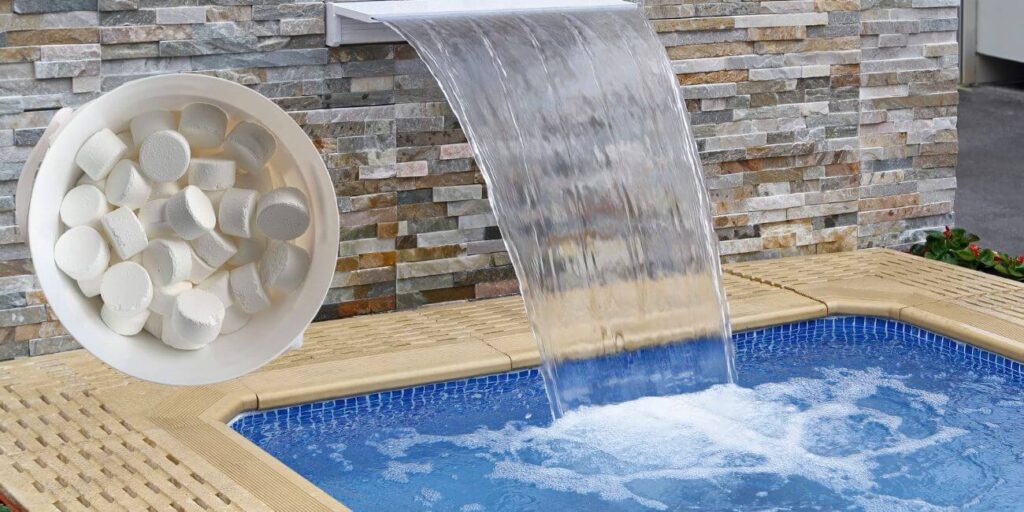Pool sanitation is essential, and chlorine and bromine are among the most usable sanitizers. These products will maintain your pool water clean, clear, free from pathogenic bacteria. But what happens if mixing chlorine and bromine in your pool? Is it safe for use? It would be an essential topic because any possible chemical reaction and the possible effects of these on the health and safety of the swimmers and the sustainability of your equipment will be involved. The following article shall delve deeply into the relationship between chlorine and bromine and some of its impacts.
Table of Contents
-
-
-
-
-
- 1. Learn What Chlorine and Bromine Are
- 2. Can Chlorine and Bromine Be Mixed?
- 3. What Happens When Mixing Chlorine and Bromine?
- 4. What Risks Are Associated with Mixing Chlorine and Bromine?
- 5. Can Chlorine and Bromine be Used in the Same Swimming Pool?
- 6. How do you Maintain Chlorine and Bromine Levels?
- 7. Conclusion
- 8. Frequently Asked Questions
-
-
-
-
1. Learn What Chlorine and Bromine Are
Chlorine

Chlorine is the most commonly used sanitizer for pools. It kills bacteria and viruses well. Chlorine is an essential pool chemical. It has been rendered necessary to keep pools clean. Chlorine is usually present in either chlorine tablets, chlorine granules, or liquid form and is applied directly to the water. It chemically interacts with the contaminants and hence neutralizes the contaminants and therefore provides clean and safe water to swim in.
Bromine

The other standard sanitizer in pools and hot tubs is bromine. It offers the same disinfection capability as chlorine but with much less harsh conditions and is generally more stable in warm water conditions. Bromine works its sanitizing way through the forming of bromine ions, which kill bacteria and other pathogens. Mainly in tablet or granular form, it is chosen for its capability to work at extremely high temperatures.
Chlorine and bromine are good sanitizers, though both have different features and work differently under various conditions. Chlorine is generally used in outdoor pools while bromine works optimally in hot-water pools such as spas and tubs.
2. Can Chlorine and Bromine Be Mixed?
Mixing chlorine and bromine could bring good actions into one, but wiser would be heeding the call of what makes this combination unsuitable-the mixing science. The two chemicals lack chemical compatibility, and there could be some specific side reactions with any direct contact.
(Source Video: What’s The Best HOT TUB Sanitizer: CHLORINE or BROMINE?)
This may at times result in less effective complexes altogether such as disinfectants. The pool or spa water may not be effectively cleaned out and may present health risks for the swimmers.
3. What Happens When Mixing Chlorine and Bromine?
Several effects occur once you mix chlorine and bromine. Here are some:
Chemical Reaction
Chlorine (Cl2) and bromine (Br2) are in the same group on the periodic chart. Thus, both are considered halogens. However, they are not complementary in water in a chemical respect. Together, the two could form bromine chloride (ClBr), which is not as effective as the pure sanitizers of chlorine and bromine.
Less Effectiveness
Such a reaction between chlorine and bromine depletes the abilities of either of these chemicals to sanitize. The chlorine and bromine would neutralize rather than work to disinfect water independently. Hence, this reduces the effectiveness of killing bacteria or other contaminants in the water. The water could not be cleared enough for safer bathing, therefore creating higher risks associated with pool waters.
Unpredictable Chemical Levels
Mixing chlorine and bromine in your pool water could result in highly unpredictable levels of the chemicals. The two can further contribute to pH and alkalinity swings among other forms of water chemistry. The result might be cloudy water, scaling, and an overall lack of balance inside the pool that frustrates the owner as they try to balance.
4. What Risks Are Associated with Mixing Chlorine and Bromine?
Effects of Pool Water Balance
A combination of chlorine and bromine can offset the chemical balance in pool water, including the pH, the levels of alkalinity, and chlorine/bromine concentration that will make it hard to keep clean, safe water. An unbalanced pool environment can create other issues, such as algae growth or cloudy water.
Health Risks to Swimmers
Although effective in disinfection, a mixture of these two forms of chemicals is likely to pose health risks to swimmers. The by-products irritate the skin, eyes, or respiratory system, creating discomfort and long-term deterioration of a swimmer’s health. Prolonged exposure to bromine and chlorine causes rashes on the skin and disorders in respiration.
Damages to Pool Equipment
Mixing chlorine and bromine will produce items that damage the pool equipment. Chemical imbalances like this causes corrosion and scaling that effects those components such as the pool pumps and filters which require seasonal maintenance and cleaning to avoid the expenses created by this type of repair.
5. Can Chlorine and Bromine be Used in the Same Swimming Pool?
It operates on the same principle: you can use both in your pool, chemicals, chlorine, and bromine, but mixing chlorine and bromine must NOT be done. At the moment, for many pool owners, chlorine has become a fashion for massive disinfection, but bromine remains the secondary sanitizer used in most spas. Most importantly, bottom line do not mix the two different chemicals together in one vessel or pool.
You can apply both to your pool and switch between chlorine and bromine, leaving enough time between each chemical application to stabilize the water. That way, you can use the advantages of the two substances without the adverse effects of their mixing.
6. How do you Maintain Chlorine and Bromine Levels?
Indeed, testing and monitoring are more often essential in effective sanitation maintenance, whether with chlorine or bromine.
Test the Water Regularly
Check the level of chlorine and bromine in your pool using a pool testing kit. Recommended chlorine levels range between 1 and 3 ppm, and bromine levels range between 3 to 5 ppm.
Chemical Levels
Adding a chemical additive is another good way to decrease high or too-low chlorine and bromine levels. Remember to follow all instructions provided by the manufacturer when adding the chemical additive to the pool.
Keep Levels of Chemicals Separately
If you use chlorine and bromine in your pool, store them separately. Apply only one kind of chemical at a time, allowing the water to stabilize before adding the other type.
7. Conclusion
Mixing chlorine and bromine could give your pool the utmost in sanitation but may also invite adverse chemical reactions and possible hazards. It’s always a good habit to use only one type of sanitizer at one time rather than mixing chlorine and bromine while also to turn chlorine and bromine off. Chemical levels in your pool will never go unbalanced and will continue giving you healthy and hygienic baths. Knowing both the properties and interaction between them will enable you to service your pool without compromising safety.
8. Frequently Asked Questions
1. Can mixing chlorine and bromine work in my hot tub?
No, it is not advisable for mixing chlorine and bromine in your hot tub. Mixing these two leads to a chemical reaction that makes this combination less effective, not to mention the health risks involved.
2. How to balance chlorine and bromine in a pool?
You balance chlorine and bromine in your pool through regular testing of the water, adding the correct amount of each chemical thereafter. The two should not be combined in operation.
3. Which is better for my pool: chlorine or bromine?
Both chlorine and bromine are good for sanitizing, but it would be much better if chlorine were used in outdoor pools and bromine in hot tubs and spas. Both are available in many different types and styles; use one that best suits your pool or needs.
